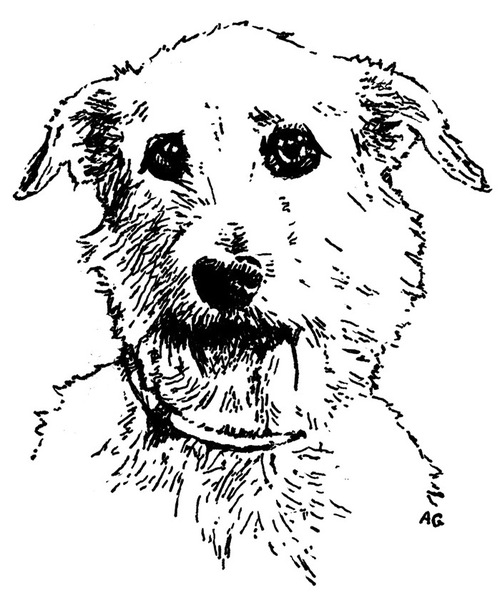
Bill & Sandy
Haddam, Connecticut
Interview by Mojie Crigler
This is the fourth interview in what will eventually become an oral history called WOOF: Americans Talk About Their Dogs, edited by John Bowe. The goal of the project is to interview as radically diverse a group of people as possible, to get them to talk about dogs from every angle possible, and, in so doing, to describe what it means to be a human living in the United States at this moment in history.
I’m an only child. When I was two and a half, my mom asked if I wanted a brother or a sister, and I said, “A dog.” So they got me a big beautiful Collie named Rexie. Collies are herding dogs. My mom would put me out in the yard, and if I started wandering away, the dog would grab me by the pants and pull me back.
My dad was a horticulturalist. His job was growing plants and designing parks for the city of New Britain, Connecticut. We lived on a beautiful farm, but it was somewhat secluded, and there weren’t a lot of kids around. I spent a lot of time hanging around the house with my dog, my cat and my pet rabbit. I must have found a way to interact with these creatures. Otherwise I would have been a very lonely child.
When I went to school, I didn’t know how to get along with other kids. I was sort of small and awkward. I wasn’t interested in sports. I got through my school years as a shy kid, a geeky kid, very quiet. I couldn’t wait to get home and hang out with the animals.
In tenth grade, I was walking by the drama club and there were twelve girls and one gay kid, and I thought, “My chances of getting a date here are probably pretty good.” Being up onstage, saying other people’s words made me sound intelligent and funny. I decided that’s what I was going to do with my life. First summer after high school, I applied for the apprenticeship at the Goodspeed Opera House in East Haddam.
We got board, we got a shared bedroom, and we got to work seventy hours a week building shows, running shows, being around professionals–for no money. I learned about having relationships with as many girls as possible and partying and staying up late and pulling all-nighters and being part of a team that’s trying to achieve something. But also embracing people’s individuality. The theatre is very accepting. I thought “This is fantastic. I’m not so weird here, because everybody’s weird.”
The next season, 1976, the new...
You have reached your article limit
Sign up for a digital subscription and continue reading all new issues, plus our entire archives, for just $1.50/month.
Already a subscriber? Sign in




